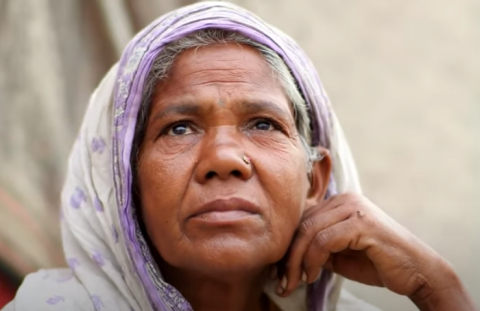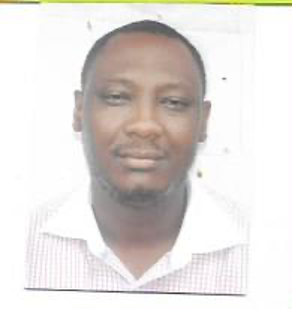World Leprosy Day: a glance at RSTMH small grants on leprosy

World Leprosy Day is marked annually on 31 January. Leprosy (also known as Hansen’s disease) is a bacterial infection caused by the slow-growing bacteria Mycobacterium leprae and mainly affects the nerves, skin, eyes, and lining of the nose. If left untreated, it can cause permanent damage to these tissues.
Leprosy is treatable and curable. It was not until the 1940s when the first medicine to treat leprosy was developed. However, treatment with dapsone meant that people affected by leprosy were being treated for many years, which could make compliance difficult. In the 1960s, two antibiotics were discovered – rifampicin and clofazimine – that are now part of the multidrug therapy (MDT) regimen.
World Leprosy Day

World Leprosy Day aims to raise awareness of a disease that has long been thought to have died out. Every day, nearly 600 people are diagnosed with the disease and in 2018, there were more than 200,000 new cases.
It is estimated that millions are undiagnosed. These numbers demonstrate that early diagnosis and treatment, and surveillance of the disease are crucial in curing people affected by leprosy and preventing further complications.
In 2020, we awarded 124 small grants to early career researchers. These included grants partnered with the National Institute for Health Research on leprosy.
We asked three grant awardees working in this space to talk about their research.
Treatment compliance in Brazil

Daniele Bertoluci: assessment of education interventions on the therapeutic compliance of MB leprosy patients, Brazil
Daniele is a PhD student in the Tropical Diseases programme at UNESP / Botucatu-SP.
For six years, she has worked at the research institute, ILSL, which is a Leprosy Reference Centre of the State Health Secretariat São Paulo and the Ministry of Health and a Collaborating Centre to the Pan American Health Organization.
Why is your research needed?
Therapeutic failure has an important impact in maintaining high prevalence of leprosy, with the cure rate observed at around 80% in Brazil. A challenge for programmes to control these chronic diseases is to guarantee adherence to long-term treatment regimens. Therefore, effective interventions to increase adherence are needed.
One of the factors that contributes to treatment failure is poor compliance, often due to insufficient knowledge on the disease, the side effects of the MDT drugs and fear of stigmatisation. Therefore, we are carrying out educational interventions aimed at health professionals and patients in health units of municipalities with low cure rates for leprosy.
What is the aim of your project?
The primary objective of this work is to assess the impact of intervention measures in the MDT treatment process on therapeutic adherence.
Secondary objectives are to:
- identify factors that may negatively impact treatment compliance at a lower level,
- develop a teaching repertoire for health professionals responsible for MDT administration,
- assess the effectiveness of the interventions on therapeutic adherence,
- guide health professionals on patient follow up during MDT administration.
What will be the impact of your research?
We expect this project to develop a didactic repertoire in the training of health professionals responsible for administering MDT for leprosy that could be replicated in other services.
In addition, results may inform a strategy to guide the actions of health professionals in the administration of MDT and other drugs (anti-reactional drugs, alternative regimens) to leprosy patients.
Early diagnosis in Sierra Leone

Joshua Coker: an assessment of barriers to the early diagnosis of leprosy in Sierra Leone
Joshua works as a consultant physician and nephrologist at Connaught Hospital, University of Sierra Leone Teaching Hospitals’ Complex and as a lecturer at the College of Medicine and Allied Health Sciences.
He is a fellow of the West African College of Physicians in Internal Medicine and Nephrology and his research interests are in infectious diseases, nephrology and general internal medicine.
Why is your research needed?
In Sierra Leone, the German Leprosy and Tuberculosis Relief Association in collaboration with the National Leprosy and Tuberculosis Control Programme supervises the control and elimination of leprosy.
Despite the successes achieved by the programmes, many health personnel are unaware and unfamiliar with the clinical presentation of leprosy, resulting in frequent misdiagnosis or delay in the diagnosis of the disease. In addition, patients face a lot of discrimination and stigmatisation in their communities, as well as restricted access to health facilities.
What is the aim of your project?
This study aims to identify factors that contribute to the overall delay in the diagnosis of leprosy among patients in Sierra Leone.
These factors may be patient-related, physician-related or delays due to the poor health system structure. Identifying these factors may help to promote early recognition of this disease and prevent unnecessary suffering.
What will be the impact of your research?
The expected research outputs include recognition of barriers that impede the early diagnosis of leprosy, elucidation of socioeconomic characteristics of patients with leprosy and their common clinical presentation, anthropometric characteristics and complications at presentation.
Findings from this research will be reported to national policymakers at the Ministry of Health and Sanitation. Furthermore, the findings will serve as a basis for future research in this area, to improve patient education and future community sensitisation.
Psychosocial impact of skin pigmentation in India

Brahmaiah Upputuri: assessment of psychosocial impact of clofazimine induced skin pigmentation in leprosy patients, India
Brahmaiah is a dermatologist working at the LEPRA Society-Blue Peter Public Health and Research Centre (BPHRC) and the Oliva Skin Clinic in India. He obtained his post-graduate degree in dermatology from Gandhi Medical College, Hyderabad.
Brahmaiah previously worked as a consultant at the Indian Council of Medical Research and on the Norwegian Research Council collaborative project at LEPRA Society-BPHRC. He has a special interest in the treatment aspects of various pigmentary disorders.
Why is your research needed?
Every year more than half of the world’s new cases of leprosy occur in India. Leprosy is treated with a combination of rifampicin, dapsone, and clofazimine known as MDT.
Clofazimine (CFZ) is commonly used to treat a severe form of leprosy called multibacillary leprosy and the World Health Organization recently recommended its inclusion in paucibacillary, a mild form of leprosy, as part of a universal MDT.
The most frequent side effect of CFZ is darkening of the skin, which is usually generalised, and fades within 6-12 months of stopping CFZ use. However, traces of discolouration can be seen up to four years later.
The pigmentation becomes more prominent upon exposure to the sun, causing social embarrassment for patients. This increases the stigma associated with leprosy and is an area that is understudied. It may also be worsening patient’s adherence to treatment.
What is the aim of your project?
This study aims to understand the psychosocial influence of discolouration and the role of photoprotective measures to minimise it.
What will be the impact of your research?
It is anticipated that this study will help to understand the psychosocial effect of pigmentation caused by CFZ and inform the planning of psychosocial support to leprosy patients during and after treatment. This study is the first of its kind to explore the role of photoprotection in limiting skin discolouration.
The intervention can be incorporated into routine leprosy control programme settings, if photoprotection measures are shown to contribute significantly to reducing drug-induced skin discolouration. This would have a positive impact on patient quality of life and improve treatment compliance.
World Leprosy Day article collection

To raise awareness of World Leprosy Day, we have also made a collection of leprosy research from the RSTMH journals – Transactions of the Royal Society of Tropical Medicine & Hygiene and International Health – freely available until 14 February.
